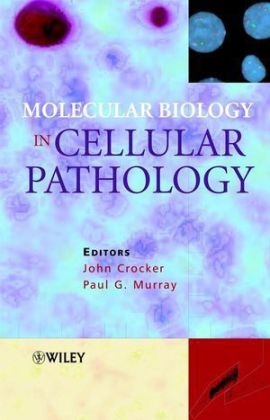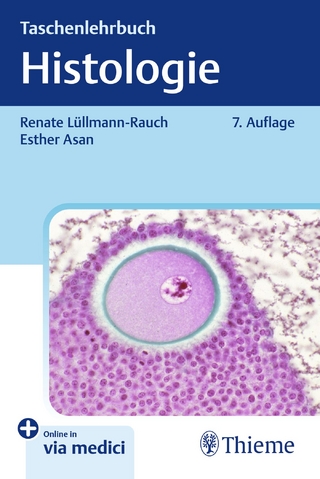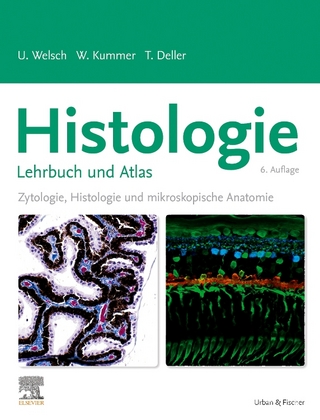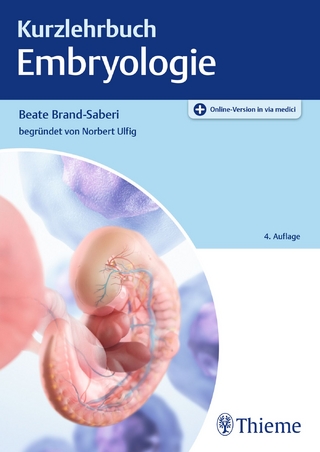
Molecular Biology in Cellular Pathology
John Wiley & Sons Inc (Verlag)
978-0-470-84475-5 (ISBN)
- Titel z.Zt. nicht lieferbar
- Versandkostenfrei innerhalb Deutschlands
- Auch auf Rechnung
- Verfügbarkeit in der Filiale vor Ort prüfen
- Artikel merken
The latest edition of this highly successful text, covers the major advances in the methods used in cellular and molecular pathology. In recent years, knowledge of the molecular organization of the cell has led to the development of powerful new techniques that bring greater accuracy and objectives to the diagnosis, prognosis and management of many diseases and to the study of pathological states. This book describes the latest molecular techniques available for the analysis of diseases. In particular it includes new techniques using fluorescent dyes, DNA microarrays, protein chemistry, and mass spectrometry. It also incorporates information from the Human Genome Project, and the new disciplines of genomics and proteomics, where relevant to pathology. Color plates are a new feature of this edition, illustrating the advances in fluorescence labeling of cells.
John Crocker is the editor of Molecular Biology in Cellular Pathology, published by Wiley. Paul G. Murray is the editor of Molecular Biology in Cellular Pathology, published by Wiley.
Preface xiii
Preface to Molecular Biology in Histopathology xv
List of Contributors xvii
1 Blotting Techniques: Methodology and Applications 1
Fiona Watson and C. Simon Herrington
1.1 Introduction 1
1.2 Blotting techniques 1
1.3 References 15
2 In-situ Hybridisation in Histopathology 19
Gerald Niedobitek and Hermann Herbst
2.1 Introduction 19
2.2 Experimental conditions 20
2.3 Probes and labels 23
2.4 Controls and pitfalls 27
2.5 Double-labelling 29
2.6 Increasing the sensitivity of ISH 31
2.7 What we do in our laboratories 33
2.8 Applications of ISH: examples 35
2.9 Perspective 39
2.10 References 40
3 DNA Flow Cytometry 49
M.G. Ormerod
3.1 Introduction 49
3.2 Definitions and terms 49
3.3 Dye used for DNA analysis 50
3.4 Sample preparation for DNA analysis 52
3.5 Analysis of the DNA histogram 53
3.6 Quality control 53
3.7 Computer analysis of the DNA histogram 55
3.8 Multiparametric measurement 57
3.9 Acknowledgements 59
3.10 References 59
4 Interphase Cytogenetics 61
Sara A. Dyer and Jonathan J. Waters
4.1 Introduction 61
4.2 Interphase cytogenetics 62
4.3 Applications 67
4.4 Conclusion 76
4.5 References 77
5 Oncogenes 79
Fiona Macdonald
5.1 Introduction 79
5.2 Identification of the oncogenes 79
5.3 Functions of the proto-oncogenes 80
5.4 Mechanism of oncogene activation 89
5.5 Oncogenes in colorectal cancer 91
5.6 Oncogenes in breast cancer 94
5.7 Oncogenes in lung cancer 95
5.8 Oncogenes in haematological malignancies 96
5.9 Other cancers 99
5.10 Conclusion 100
5.11 References 100
6 Molecular and Immunological Aspects of Cell Proliferation 105
Karl Baumforth and John Crocker
6.1 The cell cycle and its importance in clinical pathology 105
6.2 Molecular control of the cell cycle 108
6.3 Cell cycle control 111
6.4 The cell cycle and cancer 112
6.5 Immunocytochemical markers of proliferating cells 115
6.6 References 133
6.7 Further Reading 135
7 Interphase Nucleolar Organiser Regions in Tumour Pathology 137
Massimo Derenzini, Davide Treré, Marie-Françoise O’Donohue and Dominique Ploton
7.1 Introduction 137
7.2 The AgNORs 138
7.3 NOR silver-staining 142
7.4 Quantitative AgNOR analysis 145
7.5 AgNORs as a parameter of the level of cell proliferation 146
7.6 Application of the AgNOR technique to tumour pathology 147
7.7 What future for AgNORs in tumour pathology? 151
7.8 References 152
8 Apoptosis and Cell Senescence 153
Lee B. Jordan and David J. Harrison
8.1 Introduction 153
8.2 Apoptosis 153
8.3 Cell senescence 174
8.4 Summary 178
8.5 References 179
9 The Polymerase Chain Reaction 193
Timothy Diss
9.1 Introduction 193
9.2 Principles 194
9.3 Analysis of products 197
9.4 Rt-pcr 199
9.5 Quantitative PCR 200
9.6 DNA and RNA extraction 200
9.7 Correlation of the PCR with morphology 201
9.8 Problems 202
9.9 Applications 202
9.10 Diagnostic applications 203
9.11 Infectious diseases 209
9.12 Identity 209
9.13 The future 210
9.14 References 210
9.15 Online information 212
10 Laser Capture Microdissection: Techniques and Applications in the Molecular Analysis of the Cancer Cell 213
Amanda Dutton, Victor Lopes and Paul G. Murray
10.1 Introduction 213
10.2 The principle of LCM 214
10.3 Technical considerations 216
10.4 Advantages and disadvantages of LCM 217
10.5 Applications of LCM 222
10.6 Future perspectives 229
10.7 Acknowledgements 229
10.8 References 229
11 The In-situ Polymerase Chain Reaction 233
John J. O’Leary, Cara Martin and Orla Sheils
11.1 Introduction 233
11.2 Overview of the methodology 234
11.3 In-cell PCR technologies 235
11.4 In-cell amplification of DNA 238
11.5 Detection of amplicons 242
11.6 Reaction, tissue and detection controls for use with in-cell DNA PCR assays 243
11.7 In-cell RNA amplification 244
11.8 Problems encountered with in-cell PCR amplification 246
11.9 Amplicon diffusion and back diffusion 247
11.10 Future work with in-cell PCR-based assays 247
11.11 References 249
12 TaqMan® Technology and Real-Time Polymerase Chain Reaction 251
John J. O’Leary, Orla Sheils, Cara Martin, and Aoife Crowley
12.1 Introduction 251
12.2 Probe technologies 252
12.3 TaqMan® probe and chemistry (first generation) 254
12.4 Second generation TaqMan® probes 256
12.5 Hybridisation 258
12.6 TaqMan® PCR conditions 259
12.7 Standards for quantitative PCR 260
12.8 Interpretation of results 261
12.9 End-point detection 262
12.10 Real-time detection 263
12.11 Relative quantitation 263
12.12 Reference genes 264
12.13 Specific TaqMan® PCR applications 265
12.14 References 268
13 Gene Expression Analysis Using Microarrays 269
Sophie E. Wildsmith and Fiona J. Spence
13.1 Introduction 269
13.2 Microarray experiments 269
13.3 Data analysis 273
13.4 Recent examples of microarray applications 284
13.5 Conclusions 284
13.6 Acknowledgements 284
13.7 References 284
13.8 Further Reading 286
13.9 Useful websites 286
14 Comparative Genomic Hybridisation in Pathology 287
Marjan M. Weiss, Mario A.J.A. Hermsen, Antoine Snijders, Horst Buerger, Werner Boecker, Ernst J. Kuipers, Paul J. van Diest andGerritA.Meijer
14.1 Introduction 287
14.2 Technique 289
14.3 Data analysis 292
14.4 Applications 293
14.5 Clinical applications 299
14.6 Screening for chromosomal abnormalities in fetal and neonatal genomes 299
14.7 Future perspectives 300
14.8 Acknowledgements 301
14.9 References 301
15 DNA Sequencing and the Human Genome Project 307
Philip Bennett
15.1 Introduction 307
15.2 DNA sequencing: the basics 308
15.3 Applications of DNA sequencing 318
15.4 The Human Genome Project 320
15.5 References 327
15.6 Further Reading 327
15.7 Useful websites 328
16 Monoclonal Antibodies: The Generation and Application of ‘Tools of the Trade’ Within Biomedical Science 329
Paul N. Nelson, S. Jane Astley and Philip Warren
16.1 Introduction 329
16.2 Antibodies and antigens 331
16.3 Polyclonal antibodies 332
16.4 Monoclonal antibody development 333
16.5 Monoclonal antibody variants 338
16.6 Monoclonal antibody applications 341
16.7 Therapy 345
16.8 Specific applications 346
16.9 Conclusions 347
16.10 Acknowledgements 347
16.11 References 347
17 Proteomics 351
Kathryn Lilley, Azam Razzaq and Michael J. Deery
17.1 Introduction 351
17.2 Definitions and applications 352
17.3 Stages in proteome analysis 352
17.4 Future directions 368
17.5 References 368
Index 371
| Erscheint lt. Verlag | 22.4.2003 |
|---|---|
| Verlagsort | New York |
| Sprache | englisch |
| Maße | 179 x 249 mm |
| Gewicht | 879 g |
| Einbandart | gebunden |
| Themenwelt | Studium ► 1. Studienabschnitt (Vorklinik) ► Histologie / Embryologie |
| Studium ► 2. Studienabschnitt (Klinik) ► Pathologie | |
| Studium ► Querschnittsbereiche ► Infektiologie / Immunologie | |
| Naturwissenschaften ► Biologie ► Genetik / Molekularbiologie | |
| Naturwissenschaften ► Biologie ► Mikrobiologie / Immunologie | |
| Naturwissenschaften ► Biologie ► Zellbiologie | |
| ISBN-10 | 0-470-84475-2 / 0470844752 |
| ISBN-13 | 978-0-470-84475-5 / 9780470844755 |
| Zustand | Neuware |
| Informationen gemäß Produktsicherheitsverordnung (GPSR) | |
| Haben Sie eine Frage zum Produkt? |
aus dem Bereich


